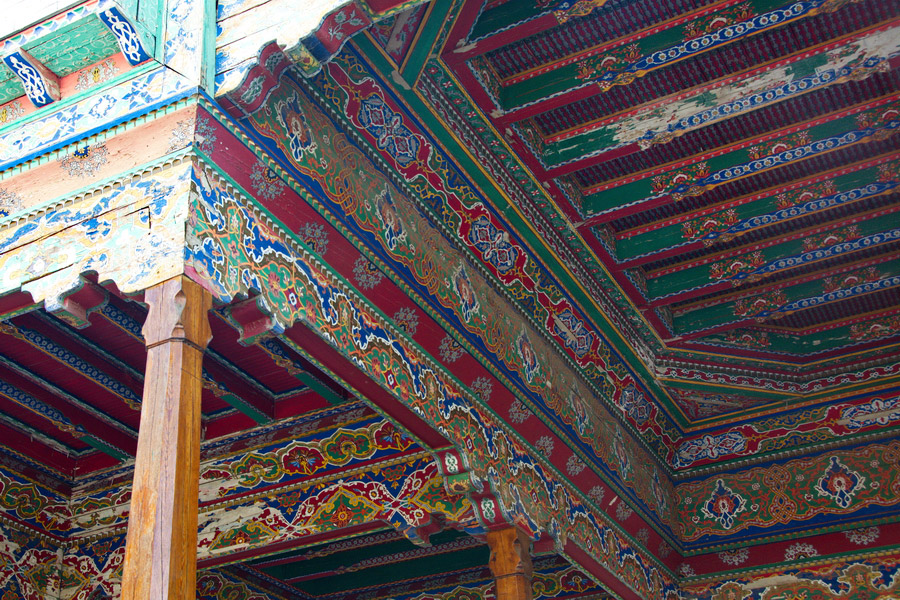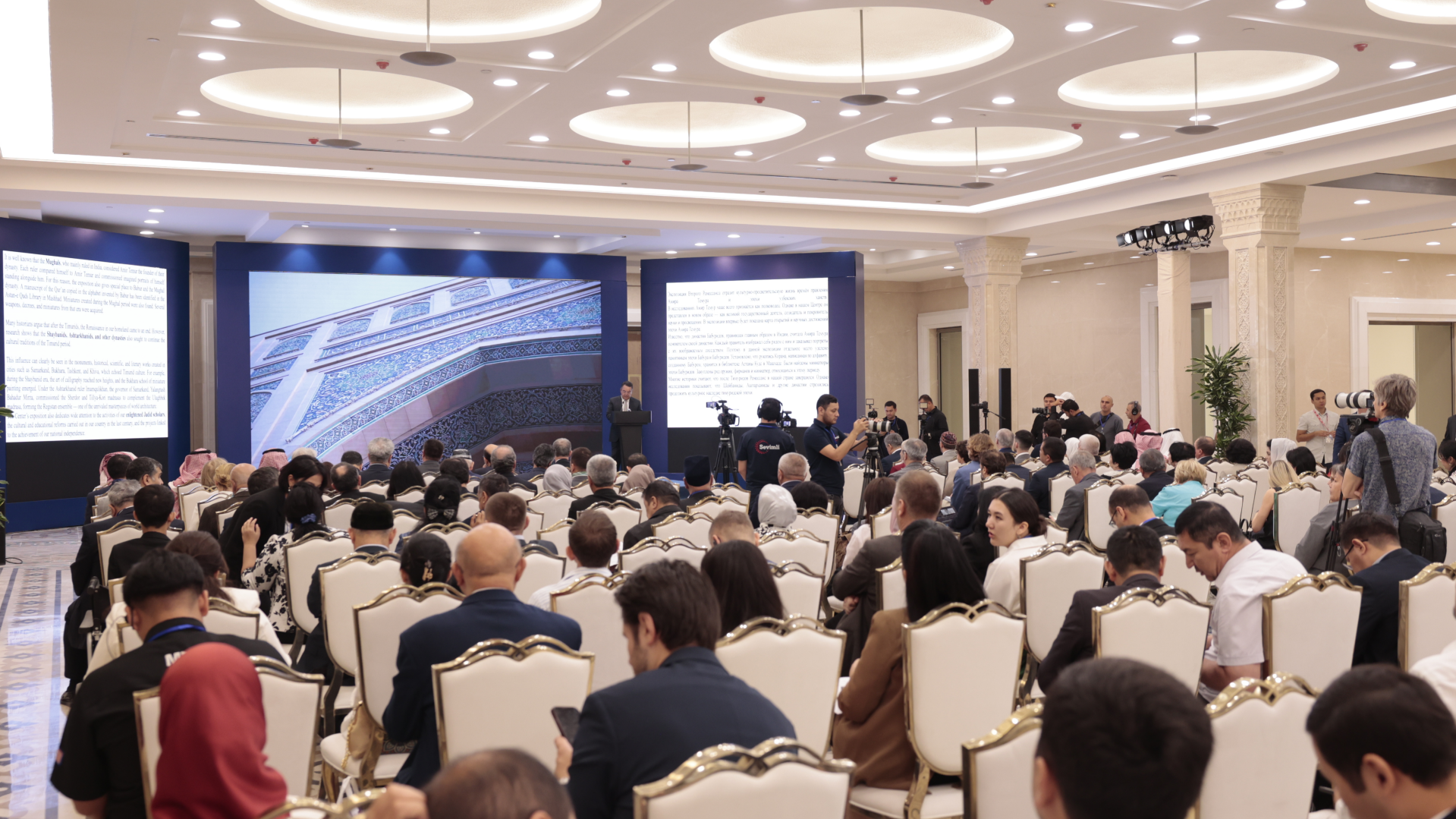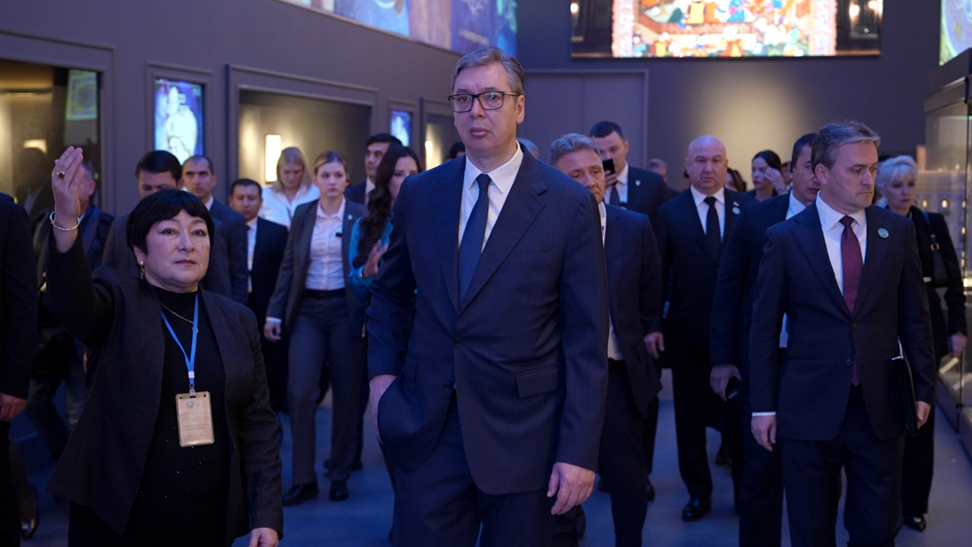Uzbek national patterns in the spotlight of the world’s famous fashion brands
🔴Not just decoration, but centuries of stories
🔴The new “language” of fashion at the Center of Islamic Civilization in Uzbekistan!
Uzbekistan is world-renowned for its ornamental patterns. From the simplest motifs to complex compositions, these designs have for centuries adorned architectural monuments, household items, clothing, and textiles. By the 19th and early 20th centuries, distinctive architectural-artistic schools had formed in different regions of the country, each varying in scale, composition, and style.

The largest centers were the cities of the Fergana Valley, Bukhara, Samarkand, Khiva, and Tashkent, each distinguished by unique color harmonies and forms. For example, Fergana masters often favored central compositions in the shape of rosettes, filling them with bright red and green plant motifs. This can clearly be seen in the ceiling decorations of the Said Ahmad Khoja madrasa in Margilan.
Uzbek ornaments developed in three main directions: geometric shapes, depictions of nature, and religious symbols. Polygons, stars, and repeated lines were used in everything from architecture to handicrafts. Patterns in the shape of flowers, trees, fruits, or crescents symbolized renewal and abundance, while religious symbols conveyed sacred meanings in Qur’anic verses and mosque decorations.
These traditions continue in the state symbols as well: the blue of the flag represents the sky and peace, white purity and prosperity, green renewal and joy, and red the courage of ancestors and kinship. The crescent and stars symbolize ancient statehood, unity, and tolerance.

Today, Uzbek ornaments are being revived not only in architecture and handicrafts but also in modern fashion and interior design. Suzani embroideries grace world catwalks, while ceramic dishes bring a national spirit into contemporary homes. It is no coincidence that leading global fashion houses such as Dior and Gucci draw inspiration from Uzbek patterns for their collections.
The patterns in suzani are not mere decoration. Red tulips, for example, symbolize protection against evil forces, while repetitive circles allude to ancient amulets against the evil eye. Thus, someone who knows the “grammar” of ornaments can “read” them. Uzbek motifs are often compared with medieval or Renaissance European symbols. For instance, the swastika, representing the cycle of life, was popular in both Central Asian and Celtic cultures. Harvard University researchers have even likened certain Uzbek designs to European alchemical symbols, showing humanity’s shared effort to express beliefs and hopes.
At the same time, master embroiderers deliberately left small “flaws” in their work, based on the belief that a perfect piece could attract the evil eye.
In the exhibitions of the Center of Islamic Civilization in Uzbekistan, national ornaments hold a prominent place. In the section “New Uzbekistan — Foundation of the New Renaissance” the historical roots, symbolic meanings, and modern interpretations of the patterns are presented. To this end, a catalog titled Uzbekistan’s Ornaments is being prepared, which will classify and present various types of folk applied arts to the public.
The most engaging part of the exhibition is the interactive panels, through which visitors can directly participate in the process of drawing and coloring patterns. In this way, national ornaments become not only a subject of admiration but also an integral part of the creative experience.
Shahnoza Rahmonova
P/S: The article may be used by citing the official website of the Center.
Most read

Over 100 experts from more than 20 countries of the world are in Tashkent!

President of Serbia Aleksandar Vučić visited the Islamic Civilization Center in Uzbekistan

The Center for Islamic Civilization – a global platform leading towards enlightenment











